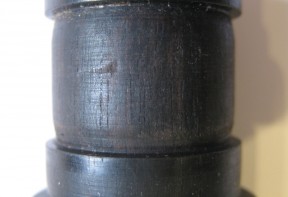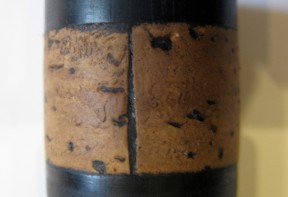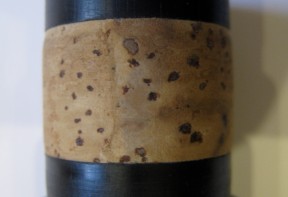Joint Re-corking
The three images show before, during and after a cork has been replaced. The first shows a tired cork breaking up and its vertical butt joint spreading. Other reasons for corks requiring replacement are wear (a joint is too loose) or if a cork is falling off. This is usually caused by the wrong type of grease being applied. Some greases are based upon the same solvent as the adhesive holding the cork in place. The cork will absorb the grease and the solvent will denature the adhesive causing the cork to come loose.

The second photo shows the recess where the cork fits. It has been cleaned and all traces of cork and glue removed. This leaves a smooth surface free from debris onto which the new cork can be applied. This particular instrument has bevelled areas under the cork so that the cork when fitted has no visible square edges.
The final image illustrates the correctly fitted cork. The join is barely visible and the edges are bevelled so that the cork edges will not drag when the instrument is assembled and dismantled. If an instrument under repair does not have the bevelling on the woodwork it is applied by hand to the cork to give the same effect. The cork is lubricated with cork grease.
Sending your recorder
Getting your instrument re corked by Barrett Recorder Repairs is a straight forward affair. For helpful advice on posting recorders please click HERE

